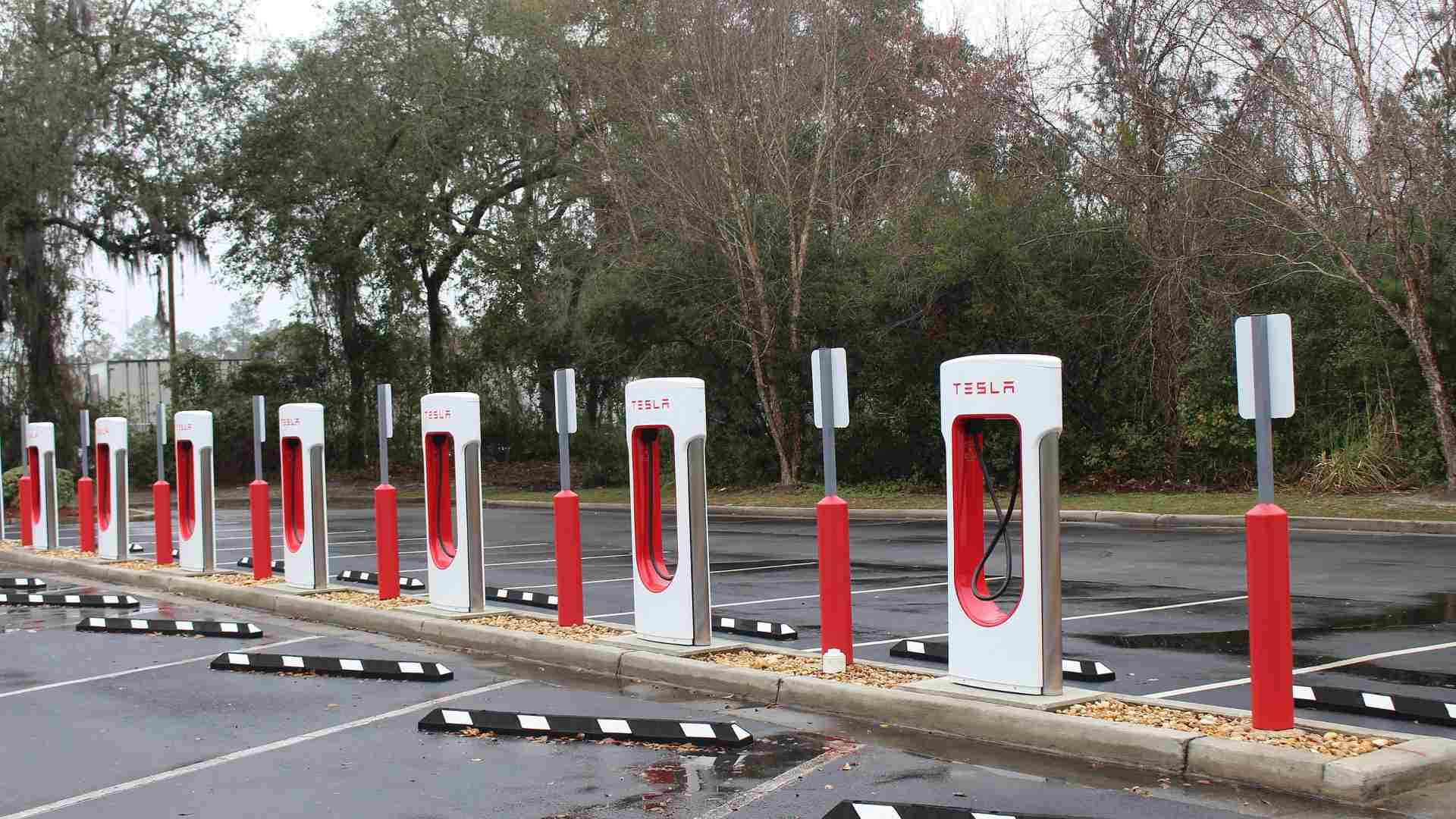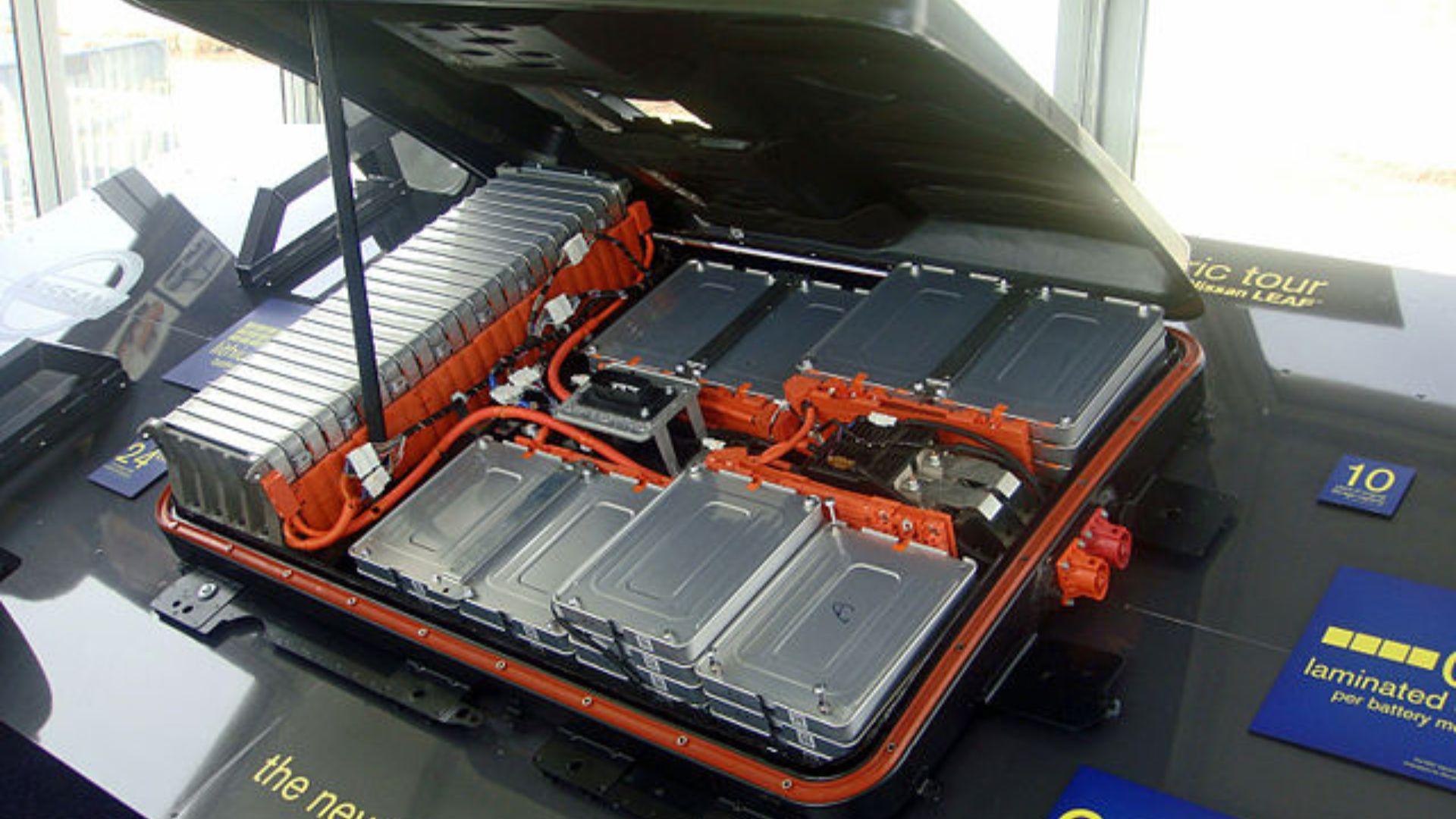EV Charging Station Company Files to Shut Down Operations Immediately
After electric vehicle sales remained stagnant, a company responsible for building super chargers filed to close their business immediately.
More than 1 million electric vehicles were purchased last year. However, the sales are not enough to keep the supporting businesses afloat. EVs only account for 7.6 percent of the auto industry’s sales.
Many Buyers Still Choosing Gas-Powered Cars
The savings associated with charging instead of buying gas are a main attraction for customers who purchase electric vehicles.

Source: motyame/Unsplash
However, over 90% of customers buying new cars in the past 12 months have selected gas-powered cars or hybrids. The challenges associated with the electric market are overwhelming, and many think they’re not going away.
Issues Preventing Customers From Purchasing EVs
Consumers have shown how worried they are about purchasing electric vehicles. More than 10 common issues have stopped buyers from making a different choice.

Source: (Kindel Media/Pexels
Some of the concerns noted are fear of fire, high sale prices, the availability of EV repair options, and costly battery replacements. For some people, the process is too new to make the switch comfortably.
Lack of Charging Options Is a Huge Turnoff
Another issue that many encounter after switching to electric is the lack of charging ports near them. When they can find a station, many are full for extended periods of time, as the cars take half an hour or longer to fully charge.

Source: Tesla/X
Even with the option to charge the vehicle at home, many people lack the driveway necessary for easy charging access, as many cities do not allow power cords to be draped over the curb.
Electric Companies Are Not Necessarily Better for the Environment
Electric vehicles are certainly better for emitting less fumes while driving. But what about the companies that produce them?

Source: Steve Jurvetson/Wikipedia Commons
In the past three years, Tesla has faced multiple lawsuits and accusations of illegally dumping harmful chemicals into the environment near their manufacturing plant in Fremont, California. The company recently settled a lawsuit for more than $1.2 million in response to the fumes associated with the painting process.
Supercharging Business Is Down
Tesla, the majority shareholder of the EV market, recently made a drastic decision regarding their supercharger team.

Source: Cnyor/Wikipedia Commons
Elon Musk, the company’s billionaire owner, laid off Tesla’s senior director of electric vehicle charging, Rebecca Tinucci, and more than 500 people on her team. Reports of the incident claim that Tinucci defied Musk’s orders by pushing back on his desire for further layoffs. Tinucci claimed further layoffs would hurt her division; Musk retaliated by firing her and the entire team.
Superchargers Should Be the Better Option
After introducing the supercharger to the market, many Tesla drivers used these charging ports exclusively.

Source: Roger Starnes/Unsplash
The fast working stations charged a Tesla in about 15 minutes and added more than 200 miles of range.
Musk Backpedaling on Decision
After two weeks, Musk realized that his massive mistake would have a downward effect on his company’s revenue shares.

Source: Flickr
He reportedly tried to hire back a large portion of the 500 laid-off workers. Many of the scorned workers had already been poached by competing companies like BP, which is working to add chargers to its gas stations.
Massive EV Charging Company Files to Shutter Operations
FreeWire Technologies, a major player in the electric vehicle charging market, filed to close its headquarters and lay off all 113 employees by June 24th.

Source: @WhatLayoff/X
The sudden decision was filed on April 24th. According to the U.S. Department of Labor WARN guidelines, companies that employ more than 100 people and wish to lay off 50 must provide at least 60 calendar days of advance notice of a plant closing or mass layoff.
The Company Needs an Immediate Cash Infusion
The company’s owners and executives have noted that although they plan to completely shutter their headquarters because of cash flow issues, they hope to grow in the future.

Source: @evmagz/X
The company will cease to exist if it does not receive additional capital to continue operations.
Chargers Already Pulled From Europe
Although the company states that they hope to grow in the future, they have shrunk immensely in the past year.

Source: @AnonOffGrid/X
The company provides charging ports to convenience stores and other business sites. On May 3rd, it closed operations in Europe. An exec noted that it wished to withdraw from all non-North American markets.
Technology Curve and Failed Field Service
A former employee of FreeWire, James Jean-Louis, noted that the company’s failure in the European market and losses stem from its failure to provide adequate support to customers and resolve technical disruptions in an adequate amount of time.

Source: @RenewableSearch/X
New and emerging technologies often have stark learning curves and difficult-to-fix issues. Companies must work with customer needs to become well-known in the electric car charging market.
Government Policies and Their Impact on the EV Charging Industry
Government policies play a crucial role in the viability of EV charging companies. Current regulations and subsidies have not been sufficient to support the industry fully.

Source: CAgovernor/X
For example, while California offers incentives for EV purchases, the infrastructure for charging remains underdeveloped. Enhanced policies are needed to provide consistent funding and support for expanding the EV charging network, preventing shutdowns like that of FreeWire Technologies.
Consumer Behavior and Reluctance Towards EVs
Consumer reluctance towards EVs is a significant barrier to market growth. Psychological factors, such as range anxiety and unfamiliarity with new technology, deter potential buyers.

Source: Austin Distel/Unsplash
Additionally, economic concerns, including the higher upfront costs of EVs compared to gas-powered cars, play a role. Improving consumer education and providing financial incentives could help shift preferences towards electric vehicles, driving industry growth.
Technological Innovations in EV Charging
Advancements in EV charging technology promise to address some existing challenges. Wireless charging, for instance, eliminates the need for physical connectors, making the process more convenient.

maznejad/X
Ultra-fast chargers can significantly reduce charging times, and smart grid integration ensures efficient energy use. However, these technologies come with high costs and require widespread adoption to be effective, necessitating strategic investment and collaboration.
Comparative Analysis of Global EV Charging Infrastructure
Globally, the state of EV charging infrastructure varies significantly. Countries like Norway lead in EV adoption due to robust charging networks and government incentives.

Source: Michael Reivera/Wikimedia
Learning from successful models, such as Norway’s comprehensive approach, can help other regions improve their charging networks and encourage EV adoption.
Economic Implications of Charging Infrastructure Failures
The shutdown of EV charging companies like FreeWire Technologies has broad economic implications. Job losses and reduced local economic activity are immediate effects.

Source: iStock
Moreover, a decrease in charging infrastructure can hinder EV adoption, impacting the entire market.
The Role of Private Investment in EV Infrastructure
Private investment is crucial for the development of EV charging infrastructure. Venture capital and private equity firms have funded significant advancements in the sector. For instance, companies like ChargePoint have thrived due to substantial private investment.

Source: Freepik
However, these investments come with risks, as market volatility and technological challenges can impact returns. Successful investment strategies balance innovation with market stability.
Sustainability Practices of EV Charging Companies
Sustainability is a critical consideration for EV charging companies. Manufacturing and maintaining charging stations have environmental impacts that need to be managed. Companies can improve their green credentials by using renewable energy sources and sustainable materials.

Source: Freepik
For instance, integrating solar panels with charging stations can reduce their carbon footprint. These practices not only benefit the environment but also attract eco-conscious consumers.
Public Perception and Media Influence
Media coverage significantly influences public perception of EVs and related businesses. Positive stories about advancements and benefits can drive consumer interest and market growth.

Source: Freepik
Accurate and balanced media representation is crucial to build trust and encourage widespread adoption of electric vehicles and charging infrastructure.
Fisker’s Looming Bankruptcy
Fisker, once a promising EV company worth billions, faces bankruptcy due to financial mismanagement and production challenges. The company’s downfall highlights the volatility of the EV market.

Source: Alexander-93/Wikimedia Commons
Factors such as high production costs, competition, and insufficient consumer demand contribute to its struggles. Fisker’s potential bankruptcy serves as a cautionary tale for other EV companies navigating the complex market landscape.
Rivian’s Financial Challenges
Rivian, another major player in the EV market, has managed to avoid bankruptcy for now. The company faces significant financial challenges but has secured funding to continue operations. Rivian’s strategic partnerships and innovative vehicle designs have helped maintain investor confidence.

Source: Rivian/Wikipedia
However, the company must address production and delivery issues to ensure long-term viability and avoid the fate of companies like Fisker.
Innovations in Battery Technology
Recent advancements in battery technology promise to revolutionize the EV market. Improved battery capacity and faster charging times address major consumer concerns.

Source: Wikimedia Commons
Companies are developing solid-state batteries, which offer higher energy density and safety compared to traditional lithium-ion batteries. These innovations could significantly boost EV adoption by making electric vehicles more practical and appealing to a broader audience.
Future Outlook for the EV Charging Market
The future of the EV charging market looks promising despite current challenges. Emerging trends, such as the integration of renewable energy sources and the development of autonomous charging solutions, are set to transform the industry.

Source: Roger Starnes Sr/Unsplash
Companies that adapt to these trends and address consumer concerns will thrive. Strategic investments and supportive policies will be key to ensuring sustainable growth and widespread adoption of electric vehicles.
